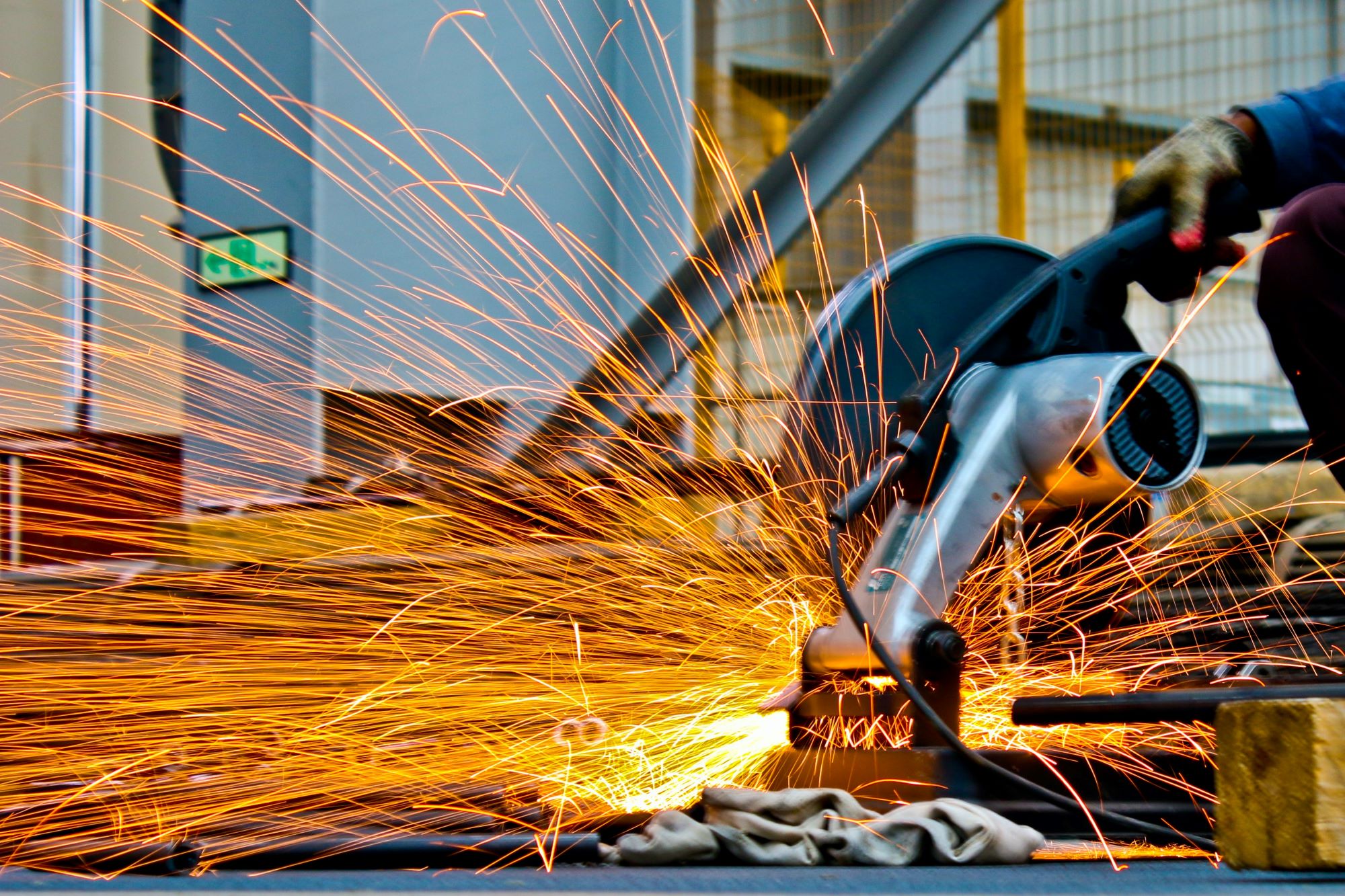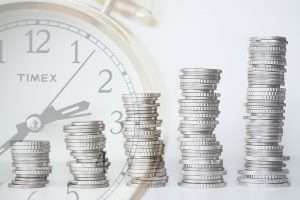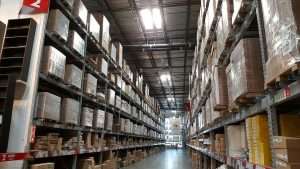Is Equipment a Current Asset?

When it comes to accounting, understanding assets is essential. Is equipment a current asset? To clarify, let’s define current assets and provide an example.
Equipment and Current Asset
Assets are divided into two groups: current and non-current. Current assets are expected to turn into cash within a year or a business’s operating cycle – whichever is longer. This includes cash, accounts receivable, inventory, and prepaid expenses. But equipment does not fall under this category.
Equipment is a non-current asset. It has tangible items like machinery, vehicles, furniture, and fixtures that are used for business operations. These long-term assets are vital for productivity. Misclassifying equipment can lead to wrong financial statements. Therefore, the right documentation and record-keeping of equipment must be done.
Asset tracking systems are useful to help manage equipment as a non-current asset. Companies can monitor the location, condition, depreciation, and maintenance schedule of their equipment with it. This helps them use resources efficiently while avoiding breakdowns.
Regular assessments of equipment value and performance can help companies make decisions on repair or replacement. This will make sure resources are invested wisely in maintaining or upgrading existing equipment.
Definition of a Current Asset in Accounting
Accounting has an important concept called a current asset. This is any resource that can easily be exchanged for cash or expected to be used up in a year. Examples of current assets are cash, accounts receivable, inventory, and prepaid expenses.
Now, let’s look at one example: equipment. Equipment is not a current asset as it takes more than a year to use and cannot be simply converted into cash. It is a long-term asset, also known as a fixed asset.
Long-term assets are resources with a useful life beyond one year and not meant to be sold or changed to money soon. Examples of these are land, buildings, vehicles, and machinery. These types of assets are essential for a business’s operations and growth.
It’s vital for businesses to correctly classify their assets for precise financial reporting. If they don’t, they can distort financial statements and even get into legal trouble.
By understanding asset categories, businesses can make educated decisions about their finances and liquidity. Managing current assets properly guarantees businesses have enough resources for short-term needs and to take advantage of growth opportunities.
Examples of Current Assets
To understand examples of current assets in accounting, delve into the section on “Examples of Current Assets.” Discover the solution of Cash and Cash Equivalents, Accounts Receivable, and Inventory as you explore how these sub-sections represent various valuable resources within a business’s financial framework.
Cash and Cash Equivalents
Asset? Description? Example? Get to know them all!
Petty Cash? It’s small cash for daily business costs. Like the cash register at a local shop.
Currency? That’s physical money like coins and notes. The cash in your wallet counts too!
Bank Deposits? Money in savings and checking accounts. Like the balance in your personal checking account.
Treasury Bills? Short-term debt securities from the government. Like investing in US Treasury Bills.
Commercial Paper? Unsecured promissory notes from companies. Like investing in highly rated commercial papers.
Money Market Funds? Mutual funds in short-term debt securities. Like investing in Vanguard Prime Money Market Fund.
Plus, there are some lesser-known types too. Certificates of deposit from banks, and travelers’ checks as an alternative to carrying large amounts of currency when traveling.
Pro Tip: Manage cash and cash equivalents effectively. Review interest rates, fees, and investment options to optimize returns.
Accounts Receivable
To get a better grasp of Accounts Receivable, let’s glance at this table:
| Customer Name | Invoice Number | Invoice Date | Due Date | Amount |
|---|---|---|---|---|
| Alpha Corp | INV-001 | 2022-01-01 | 2022-02-15 | $5,000 |
| Beta Inc | INV-002 | 2022-01-10 | 2022-02-20 | $3,000 |
| Gamma Co | INV-003 | 2022-01-15 | 2022-03-01 | $7,000 |
This table shows the info about invoices to customers. It has customer name, invoice number, invoice date, due date, and the amount owed. It’s important for businesses to manage their accounts receivable. This will help their cash flow. They can also offer incentives for early payments or employ strategies for overdue payments.
Here is a true story about accounts receivable. a small boutique had problems when customers didn’t pay on time. This caused cash flow issues and affected their ability to order new inventory. They solved it by setting strict invoicing rules and offering discounts for prompt payment. This helped improve their financial health.
Inventory
To better understand the importance of inventory, let’s break it down into its components:
- Raw Materials: These are the base items used in production, like wood, metal, chemicals, and fabrics. They make up the final products.
- Work-in-Progress: Products that are not quite finished yet, but have had some transformation done, fall into this category.
- Finished Goods: These are the final products ready for sale to customers. It could be electronics or clothing, depending on the industry.
- Merchandise: Businesses buy these goods to resell without processing or modifications. Examples include retail store inventory or wholesalers’ stock.
- Supplies: Consumables necessary for day-to-day operations and maintenance. Examples are office stationery, cleaning materials, and packaging materials.
Pro Tip: Having a well-managed inventory system helps to avoid overstocking or stockouts, which can be costly. Regular audits and automated tracking systems can improve operational efficiency and profitability.
Importance of Identifying Equipment as a Current Asset
Correctly identifying equipment as a current asset is key for businesses. It helps with accurate financial reporting and the proper management of resources. Here’s why it’s so important:
Benefits:
- Assesses company liquidity
- Facilitates asset allocation and utilization
- Enables accurate financial reporting
- Enhances decision-making processes
Identifying equipment as a current asset does more than just improve financial statements. It helps a business understand their liquidity so they can meet short-term obligations and overall financial health. Also, it helps with the efficient use and allocation of resources. When a company knows which equipment is classified as a current asset, they can plan better and be more productive.
Plus, accurate financial reporting depends on correctly labeling equipment as a current asset. It affects balance sheets and income statements. It gives stakeholders info about the company’s financial position.
Let me give an example to show why this matters. I recently saw a manufacturing company that didn’t identify their machinery as current assets. This made it hard for them to get financing from investors. The lack of clarity about their liquidity caused worries about their ability to meet short-term obligations.
Considerations for Classifying Equipment as a Current Asset
To classify equipment as a current asset, consider its useful life and depreciation, as well as the intent to resell or use it for current operations. Understanding these two factors will provide a solution for categorizing equipment effectively.
Useful Life and Depreciation
Professionally, useful life and depreciation are key in classifying equipment as a current asset. Knowing an asset’s lifespan and expected value decrease is essential for correct financial reporting.
Here’s a table with different equipment and their useful lives and depreciation rates:
| Equipment | Useful Life | Depreciation Rate |
|---|---|---|
| Computer | 5 years | 20% per year |
| Vehicle | 10 years | 10% per year |
| Machinery | 15 years | 6.67% per year |
| Furniture | 8 years | 12.5% per year |
Each equipment type has its own useful life. This is the estimated time it can give economic benefits. The depreciation rate reflects the annual decrease in an asset’s value caused by wear and tear or outdatedness. By following these guidelines, businesses can accurately appraise their current assets’ worth and stay transparent in financial statements.
Pro Tip: It’s wise to keep an eye on changes in industry standards or tech advancements that might affect the equipment’s useful life and depreciation. Assessing regularly will guarantee precise classification and reporting of current assets.
Intent to Resell or Use for the Current Operations
When classifying equipment, intent matters. To decide how to categorize and account for it on a balance sheet, we must understand the ‘intent to resell or use for current operations.’ Let’s look at a table.
| Factors | Resell | Use Current Ops |
|---|---|---|
| Importance | High | High |
| Expected Life | Short | Long |
| Maintenance | Minimal | Regular |
| Value | Depreciated | Capitalized |
With resell intent, life and maintenance are short and minimal. The value is depreciated. For current operations, life and maintenance are long and regular. Value is capitalized.
Suggestions:
- Document intent when acquiring equipment.
- Research resale potential before purchase.
- Review and update categorization.
This helps businesses accurately classify assets. It allows stakeholders to make informed decisions based on reliable info about current assets.
Accounting Treatment of Equipment as a Current Asset
To ensure accurate accounting, properly handle equipment as a current asset. This section on the accounting treatment of equipment delves into the solution and includes sub-sections on recording equipment as a current asset and depreciation of equipment. Get a comprehensive understanding to streamline your accounting practices.
Recording Equipment as a Current Asset
Recording equipment is treated as a current asset in accounting. This means it has a useful life of less than one year, or can be easily turned into cash. This lets businesses account for them and accurately show their value on the balance sheet.
Let’s look at this example:
| Equipment Name | Quantity | Purchase Price (USD) | Total Value |
|---|---|---|---|
| Microphone | 5 | $100 | $500 |
| Studio Mixer | 1 | $500 | $500 |
| Headphones | 10 | $50 | $500 |
| Total | – | – | $1,500 |
The table above shows recording equipment, its quantity, price, and total value. By recording each item, businesses can see the value of their assets and make decisions about how to use and replace them.
It’s important to remember to include other expenses, like delivery fees or installation costs. This way, the asset’s total worth is accurate.
I have a friend who learned the importance of recording equipment treatment in a unique way. They had good microphones and sound mixers, but didn’t record them as current assets. When their business faced a financial crisis, they showed the value of the recording equipment on their balance sheet. This got them extra funding, using the assets as collateral. This shows that recognizing recording equipment as current assets is important for both financial clarity and potential opportunities.
Depreciation of Equipment
Equipment depreciation is a process to spread the cost of a piece of equipment over its useful life. This shows its value in financial statements. Depreciation helps businesses take into account wear and tear, obsolescence, and market value changes. It’s essential for accurate reporting and decision-making.
Fun fact: The concept of equipment depreciation goes back centuries! Merchants used written records to establish the value of their tools and machinery. Now, technology automates this, making it simpler for businesses to manage their assets.
Tables can help explain different methods of depreciation, such as:
- Straight-Line (equal expense each year)
- Declining-Balance (higher expense in early years)
- Units-of-Production (depreciation based on usage or output)
Potential Impact on Financial Statements
To understand the potential impact of equipment on financial statements, delve into the Balance Sheet and Income Statement. These sub-sections will provide you with a comprehensive view of how equipment is accounted for and its effects on the overall financial health of a company.
Balance Sheet
The Balance Sheet is an important financial report, displaying a company’s assets, liabilities, and shareholders’ equity at a definite moment. It gives an overview of the company’s financial situation, allowing stakeholders to judge its solvency and liquidity.
Here’s an example of a Balance Sheet:
| Assets | Liabilities | Shareholders’ Equity | |
|---|---|---|---|
| Current Assets | |||
| Fixed Assets | |||
| Total Assets | Total Liabilities and Equity |
The current assets area includes cash, accounts receivable, and inventory. These are valuable since they can be switched into cash quickly. Fixed assets like property, plant, and equipment are essential for business operations in the long run.
It is significant to remember that the total assets has to be equal to the sum of liabilities and shareholders’ equity for the balance sheet to be correct. This states that all resources belonging to the company are either financed by external sources (liabilities) or contributed by shareholders (equity).
Likewise, having a personal balance sheet helps individuals to track their finances cleverly. By understanding their assets, liabilities, and net worth, they can make wise financial decisions and reach their monetary aims. Therefore, remember, whether it’s for personal or business purposes, keeping a balanced sheet leads to sound financial management.
Income Statement
Once upon a time, in a bustling city, there was a small family-owned bakery. This bakery was renowned for its delectable treats. The owner kept an Income Statement each month to inspect their income from sales and services. This Income Statement showed their revenues and expenses. Revenues included: Sales Revenue, Service Revenue and Other Revenue. Expenses included: Cost of Goods Sold, Operating Expenses and Interest Expense.
The Income Statement helped the bakery make decisions so that their business would stay profitable. It also gave them a snapshot of their revenues, expenses and net income for the month. This financial tool was essential for the success of the bakery.
Equipment a Current Asset
To sum up, equipment is a current asset in accounting. It is listed on the balance sheet under current assets as it is likely to be used or transformed into cash in a year. When a business buys equipment, it usually plans to use it for earning money. So, it is classified as a short-term asset as it is expected to be used up or sold in a brief time.
Moreover, equipment can be easily changed to cash if required. For instance, if a business decides to upgrade or modify its strategy, it can sell the existing equipment to get cash. It’s essential to remember that while usually equipment is seen as a current asset, there may be exceptions depending on a company’s particular circumstances and accounting techniques.
In reality, according to Investopedia, “Equipment owned by a business is grouped as a fixed asset and shown in the long-term assets section of a balance sheet.” Nevertheless, this may differ from one business to another based on their industry and accounting principles.
Frequently Asked Questions
FAQ 1: Is equipment considered a current asset in accounting?
Answer: No, equipment is not considered a current asset in accounting. It falls under the category of non-current or long-term assets.
FAQ 2: What is the accounting definition of a current asset?
Answer: a current asset is an asset that is expected to be converted into cash or used up within one year or the normal operating cycle of a business, whichever is longer.
FAQ 3: Can you provide an example of a current asset?
Answer: Examples of current assets include cash, accounts receivable, inventory, prepaid expenses, and short-term investments.
FAQ 4: What defines equipment as a non-current asset?
Answer: Equipment is considered a non-current asset because it has a longer useful life and is not expected to be converted into cash within the short-term period of one year or the operating cycle of a business.
FAQ 5: How is equipment accounted for in financial statements?
Answer: Equipment is recorded on the balance sheet as a non-current asset and its value is typically depreciated over its estimated useful life.
FAQ 6: What is the importance of properly classifying equipment as a non-current asset?
Answer: Properly classifying equipment as a non-current asset is crucial for accurate financial reporting and analysis. It helps in determining the long-term value of the asset and assessing the financial health of a company.
















Leave a Reply